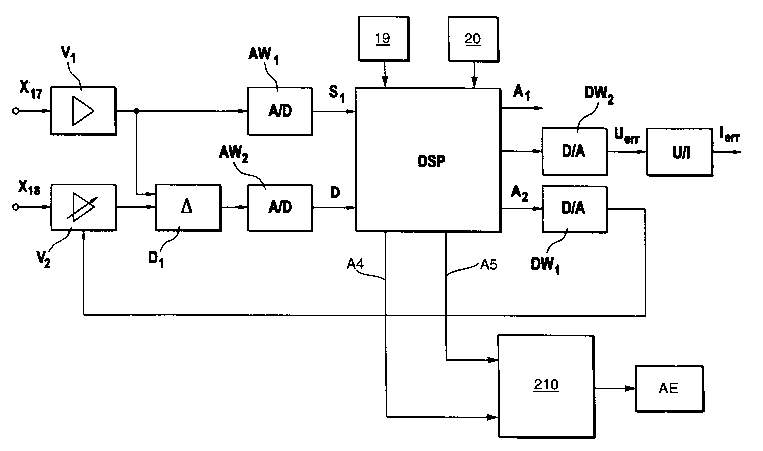Some of the information on this Web page has been provided by external sources. The Government of Canada is not responsible for the accuracy, reliability or currency of the information supplied by external sources. Users wishing to rely upon this information should consult directly with the source of the information. Content provided by external sources is not subject to official languages, privacy and accessibility requirements.
Any discrepancies in the text and image of the Claims and Abstract are due to differing posting times. Text of the Claims and Abstract are posted:
| (12) Patent Application: | (11) CA 2477798 |
|---|---|
| (54) English Title: | CORIOLIS MASS FLOW METER FOR MEASURING CONCENTRATION |
| (54) French Title: | DEBITMETRE MASSIQUE DE CORIOLIS DE MESURE DE CONCENTRATION |
| Status: | Deemed Abandoned and Beyond the Period of Reinstatement - Pending Response to Notice of Disregarded Communication |
| (51) International Patent Classification (IPC): |
|
|---|---|
| (72) Inventors : |
|
| (73) Owners : |
|
| (71) Applicants : |
|
| (74) Agent: | SMART & BIGGAR LP |
| (74) Associate agent: | |
| (45) Issued: | |
| (86) PCT Filing Date: | 2003-02-26 |
| (87) Open to Public Inspection: | 2003-09-18 |
| Examination requested: | 2004-08-31 |
| Availability of licence: | N/A |
| Dedicated to the Public: | N/A |
| (25) Language of filing: | English |
| Patent Cooperation Treaty (PCT): | Yes |
|---|---|
| (86) PCT Filing Number: | PCT/EP2003/001957 |
| (87) International Publication Number: | WO 2003076879 |
| (85) National Entry: | 2004-08-31 |
| (30) Application Priority Data: | ||||||
|---|---|---|---|---|---|---|
|
The invention relates to a coriolis mass flowmeter for determining a
concentration, wherein a concentration function is stored in a concentration
evaluation unit (210). As a result, the user can produce a concentration value
correlating to the use thereof at a predetermined temperature and thickness of
the medium.
L'invention concerne un débitmètre massique de Coriolis permettant de déterminer des concentrations, pour lequel une fonction quelconque de concentration est stockée en mémoire dans une unité d'évaluation de concentration (210). L'utilisateur a ainsi la possibilité de produire une valeur de concentration adaptée à l'utilisation voulue, pour une température et une masse volumique prédéterminées.
Note: Claims are shown in the official language in which they were submitted.
Note: Descriptions are shown in the official language in which they were submitted.

2024-08-01:As part of the Next Generation Patents (NGP) transition, the Canadian Patents Database (CPD) now contains a more detailed Event History, which replicates the Event Log of our new back-office solution.
Please note that "Inactive:" events refers to events no longer in use in our new back-office solution.
For a clearer understanding of the status of the application/patent presented on this page, the site Disclaimer , as well as the definitions for Patent , Event History , Maintenance Fee and Payment History should be consulted.
| Description | Date |
|---|---|
| Inactive: Dead - No reply to s.30(2) Rules requisition | 2010-10-25 |
| Application Not Reinstated by Deadline | 2010-10-25 |
| Deemed Abandoned - Failure to Respond to Maintenance Fee Notice | 2010-02-26 |
| Inactive: Abandoned - No reply to s.30(2) Rules requisition | 2009-10-23 |
| Inactive: S.30(2) Rules - Examiner requisition | 2009-04-23 |
| Inactive: IPC from MCD | 2006-03-12 |
| Letter Sent | 2004-11-05 |
| Inactive: Cover page published | 2004-11-02 |
| Letter Sent | 2004-10-29 |
| Inactive: Acknowledgment of national entry - RFE | 2004-10-29 |
| Application Received - PCT | 2004-09-27 |
| Inactive: Single transfer | 2004-09-13 |
| National Entry Requirements Determined Compliant | 2004-08-31 |
| Request for Examination Requirements Determined Compliant | 2004-08-31 |
| All Requirements for Examination Determined Compliant | 2004-08-31 |
| Application Published (Open to Public Inspection) | 2003-09-18 |
| Abandonment Date | Reason | Reinstatement Date |
|---|---|---|
| 2010-02-26 |
The last payment was received on 2009-01-22
Note : If the full payment has not been received on or before the date indicated, a further fee may be required which may be one of the following
Please refer to the CIPO Patent Fees web page to see all current fee amounts.
| Fee Type | Anniversary Year | Due Date | Paid Date |
|---|---|---|---|
| Request for examination - standard | 2004-08-31 | ||
| Basic national fee - standard | 2004-08-31 | ||
| Registration of a document | 2004-09-13 | ||
| MF (application, 2nd anniv.) - standard | 02 | 2005-02-28 | 2005-01-19 |
| MF (application, 3rd anniv.) - standard | 03 | 2006-02-27 | 2006-01-23 |
| MF (application, 4th anniv.) - standard | 04 | 2007-02-26 | 2007-01-23 |
| MF (application, 5th anniv.) - standard | 05 | 2008-02-26 | 2008-01-23 |
| MF (application, 6th anniv.) - standard | 06 | 2009-02-26 | 2009-01-22 |
Note: Records showing the ownership history in alphabetical order.
| Current Owners on Record |
|---|
| ENDRESS + HAUSER FLOWTEC AG |
| Past Owners on Record |
|---|
| CHRISTIAN MATT |